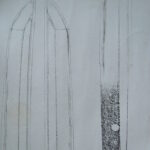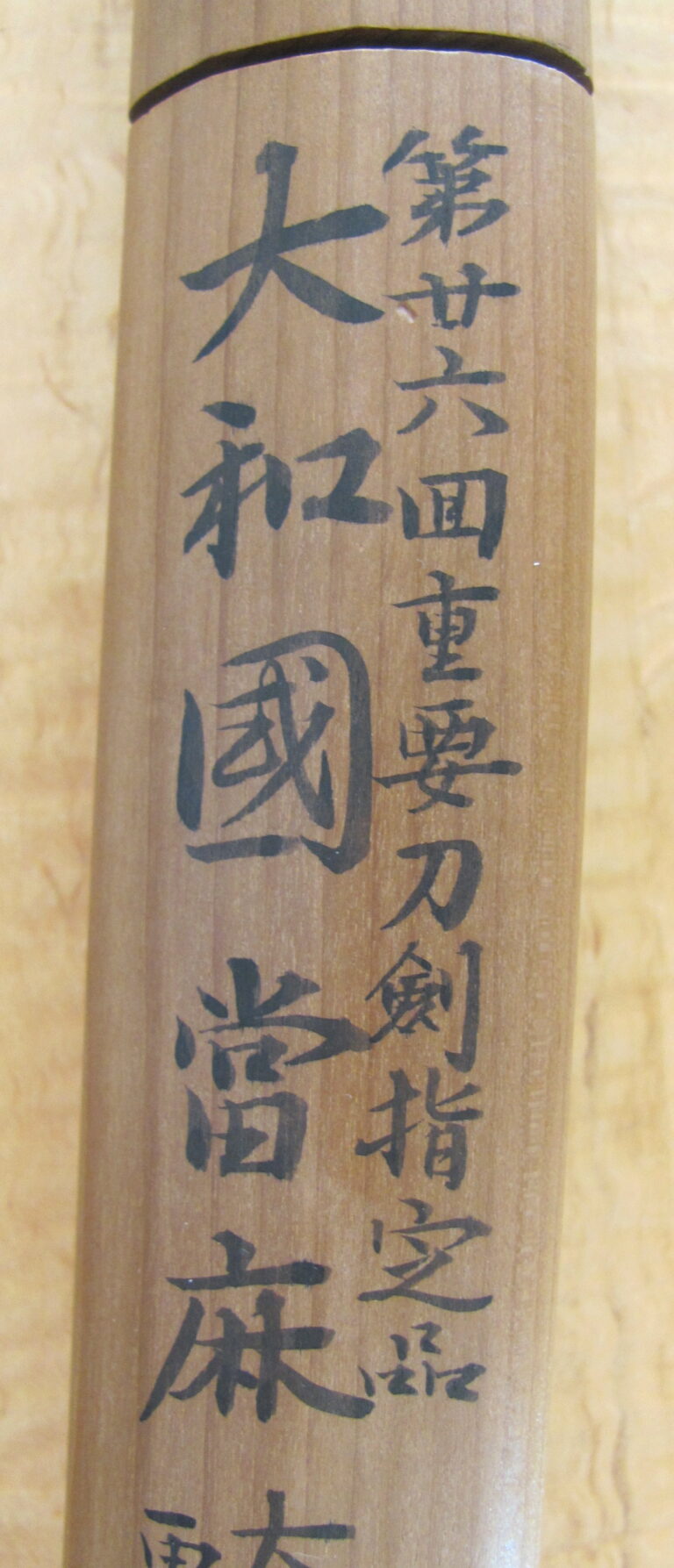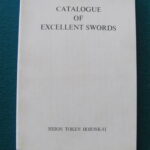Q826. Osuriage Mumei Tachi, Juyo to Taema, Tanobe Sayagaki
$28,500.00
Q826. Tachi with Juyo paper from the NBTHK , giving it to Yamato Taema (also written Taima). The Juyo paper translates:
Shōwa 54 (1979) March 2
Designated at the 26th Jūyō Shinsa
Jūyō Tōken
One Katana Mumei TAIMA
Tōkyō OGAWA Osamu
Dimensions Nagasa 64.4cm, Sori 1.1cm, motohaba 3.0cm, moto kasane .75 cm, sakihaba 2.1cm,saki kasane .4 cm, kissaki nagasa 3.5cm, nakago nagasa 19.2cm, with very slight nakago sori. .Shape Shinogi zukuri, iori mune, wide mihaba, shallow sori, mid size kissaki.
Kitae Ko itame hada, with flowing masame mixed throughout the sword, thick with jinie.
Hamon Thin suguha mixed in with small gunome and some large kuichigaiba. Also seen are uchinoke and yubashiri. Replete with nie, and a deep nioi-kuchi in the area near the tang. Bōshi Slight midare with hakikake.
Engravings Grooves running the length of sword on both sides terminating in the nakago (kakinagashi).
Nakago Ōsuriage, horizontal cutoff (kiri), sujichigai file marks, two mekugi-ana with one of them filled in.
Explanation
This sword is ōsuriage, but is attributed to Taima. Taima swords with extant signatures are particularly rare. Most Taima swords are mumei with Taima attribution and feature chikei with prominent kinsuji, are rich with nie, and at first glance resemble Sōshū blades. This particular sword shows Yamato characteristics throughout the jiba and bōshi, and the hataraki of the jiba is rich with nie, which is often seen in Taima swords. This is a sword with a well-made jiba.
There is a sayagaki by Tanobe Michihiro,who, until his retirement a few years ago, was an officer of the NBTHK and National Sword Museum. It translates:
Yamato no Kuni Taima
Designated “Juyo Tōken” at the 26th Shinsa
Ōsuriage, mumei. End of Kamakura period. The appearance of the jiba and bōshi shows remarkable Yamato characteristics, and in general it is thick with nie.
In addition, the overall strong nie activities display the diligence for which this school is known. Outstanding work. Rare and precious (Chin chin cho cho)
The sword is in a well done (in Japan) polish and mounted with a double gold foil habaki in fine shirasaya. The blade is flawless. The tachi will come in a padded sword bag.
The Taema smiths were one of 5 schools working for Buddhist temples in Yamato Province in the Kamakura period and into Nambokucho. The sayagaki dates this to the end of Kamakura: 1336 or earlier. My pictures don’t show the fine hataraki of the hamon (look to the oshigata on the paper for that) but they do show you every inch of the sword.
This is special. 2 pounds, 8 ounces. $28,500.











































































































